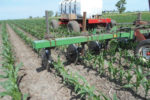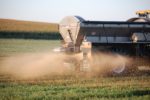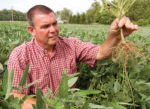Advertise Follow Us
Soil Health
Shop Built Sidedressing Tool Brings In-Season Flexibility
Strip-tiller Larry Tombaugh combined an old cultivator, SpikeWheel units and a CDS-John Blue pump into a unit that dispenses nitrogen with low soil disturbance.
Read More
Busting The ‘Colder, Wetter’ Myth With No-Till, Cover Crops
Scenarios in Indiana and Wisconsin seem to question the assumption that no-tilled fields with cover crops are slower to warm up and dry out than conventionally farmed soils.
Read More
Obsession With Soil Health Paves Way For Better No-Tilling
Indiana no-tiller Dave Chance uses a combination of compost, cover crops and vertical tillage to tame high-clay soils and boost yields.
Read More
What I've Learned from No-Tilling
Nudging No-Till Yields From Every Direction
Indiana no-tiller Jack Maloney finds mastering many production practices is the key to pushing no-till corn and soybeans yields higher.
Read More





.png?height=125&t=1731942302&width=150)





